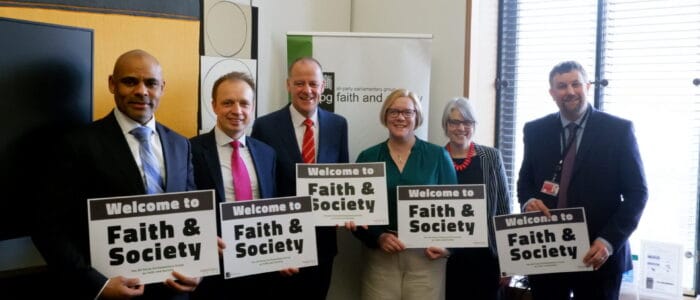Reflections on working in partnership
During #FaithinPartnership Week, the All Party Parliamentary Group on Faith and Society released two documents looking at how faith groups and local authorities can work together in helping those in need in our communities.
Here, Professor Chris Baker, author of Keeping the Faith 2.0, and Jeremy Simmons, who helped develop The Faith Covenant: What, Why, How?, look at why these two documents were developed, and what they hope to see next.
On Keeping the Faith 2.0

Professor Chris Baker, Author of Keeping the Faith 2.0
Professor of Religion and Belief in Public Life, The Faith and Civil Society Unit
Goldsmiths, University of London
The Keeping the Faith 2.0 report explores what lies behind effective and sustainable partnerships across faith groups and local authorities. The original Keeping the Faith, which covered the first six months of the pandemic, highlighted the highly positive perceptions of partnership working that local authorities had experienced working with faith groups—in particular, their flexibility, professionalism, and resilience.
That report uncovered a ‘new normal’ that had emerged during those ‘war footing days’; a wish on both sides to continue to deepen relationships based on trust and delivery, a willingness to share resources and innovation, and a commitment to move to partnerships based on co-creation and co-design.
Keeping the Faith 2.0 tells first-hand of the lessons that have been learnt on the front line, and of the hard but rewarding work required to preserve this ‘new normal’. A key insight is that the pandemic highlighted the importance of values in helping to shape policy responses under extreme pressure, and that taking time to talk about the values that support our vision and work—whether they come from religious or non-religious sources—is vital for building trust and resilience. It also contributes to a highly effective and joined-up way of thinking—as one contributor reflected, “Shared values help lead to shared outcomes.”
This approach represents a shift in mindset and culture—working though shared values and actions rather than old ‘us-and-them’ hierarchies—that is essential if we are to weather the current cost-of-living crisis as well as the pandemic. This is a lesson that faith groups and local authorities have learned together; but more than that, it is a lesson for all sectors going forward.
On The Faith Covenant: What, Why, How

Jeremy Simmons
Policy and Programme Officer
FaithAction
We often have people contact us who are interested in the Faith Covenant—members of faith groups, local authority officers, and sometimes councillors themselves. And we’ve seen interest in the Covenant—what it is, what it can achieve, and how to go about signing it with all the relevant parties—has increased a great deal since the start of the pandemic. Across civil society, there is a tangible desire to build upon partnership successes and, in some cases, make a symbolic statement of intent about what the future might look like.
The Faith Covenant: What, Why, How is designed to answer those initial questions about the Faith Covenant. It’s a short and sharp distillation of what we’ve learned in over a decade of supporting faith groups and local authorities to work together. It contains insights from current Covenant signatory areas, case studies outlining practical initiatives carried out in localities, core principles to bear in mind on the journey to a Covenant, and first steps to signing.
We appreciate one document cannot answer everything; this is simply a primer for those looking to find out more. The particulars of any Faith Covenant agreement will need to be worked out locally, in the messiness and unpredictability of relationship— and our national team is always happy to answer a call about those nitty gritty issues, too. We hope that this resource gets more people talking about the Faith Covenant and the possibilities it presents, leading to even more successful partnerships in the future!


